Step into the stories of Moose Jaw, Saskatchewan! From colourful murals to ghost signs and historic architecture, explore how outdoor art brings this prairie city’s history to life.
Disclosure: This post contains affiliate links. If you buy something from one of our affiliates, we receive a small commission at no extra charge to you. Thanks for helping to keep our blog up and running!
Table of Contents
Moose Jaw Murals and More
Moose Jaw may be a small prairie city, but its history looms large. Known for Prohibition-era rumrunning tales, underground tunnels, and a colourful mix of prairie grit and glamour, the city has found a creative way to celebrate its past—by putting it on the walls.
We started our visit with an Al Capone-inspired bootlegging tour through the Tunnels of Moose Jaw. The immersive experience set the stage, plunging us into the world of prohibition, organized crime, and prairie resilience.
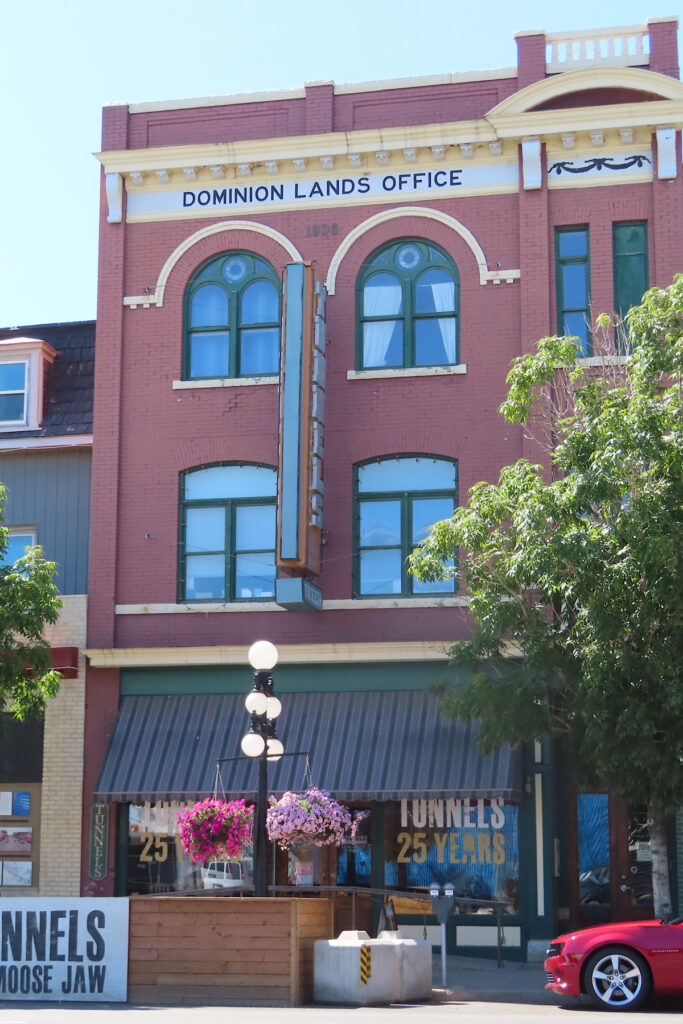
Emerging back into daylight, we found ourselves looking at Moose Jaw’s history in a whole new way. Instead of heading straight off to meet friends camping at Moose Mountain Provincial Park, we set off on an impromptu scavenger hunt—seeking out the murals of Moose Jaw scattered across downtown.

Along the way, we are happily sidetracked by ghost signs, brick façades, and heritage buildings that reminded us that art doesn’t always hang in galleries.

Outdoor Art in the Heart of the Prairies
The murals of Moose Jaw give visitors a chance to step into the city’s story. More than just pretty pictures, they depict scenes from the city’s past: railway workers, farmers, prairie families, Indigenous heritage, and the bustling Main Street of the 1920s.
With close to 50 outdoor murals, the city has transformed its downtown core into an open-air gallery. Armed with a mural map we found online, we began tracing our way through the streets. Some murals revealed themselves right away; others took a bit of squinting around corners or looking up above parked cars. By the end, we had discovered over 20, with plenty more left for another visit.
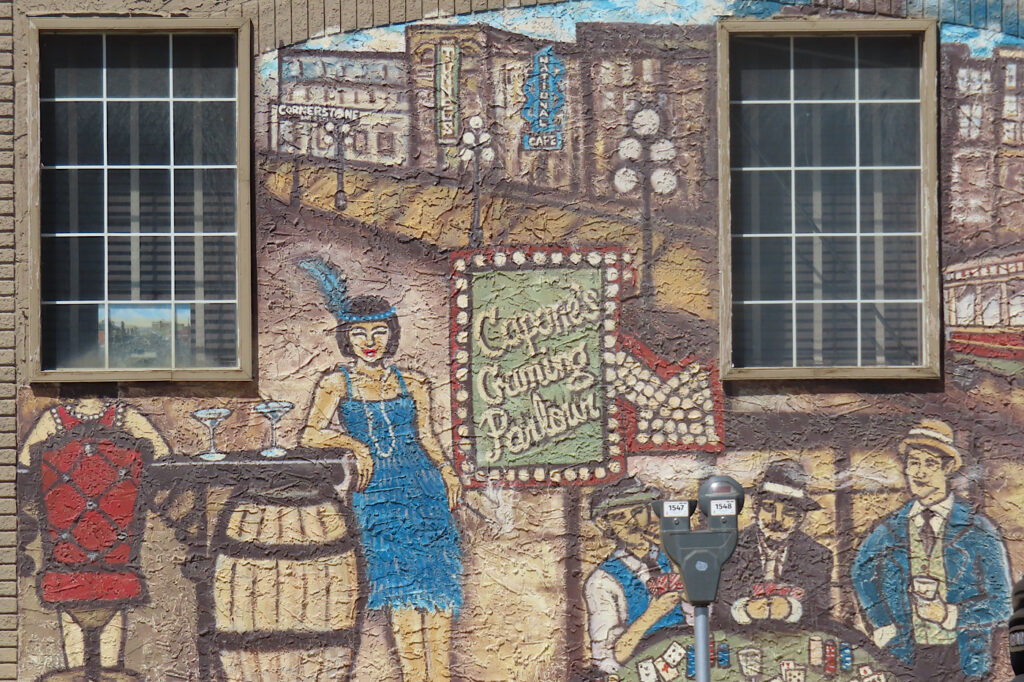
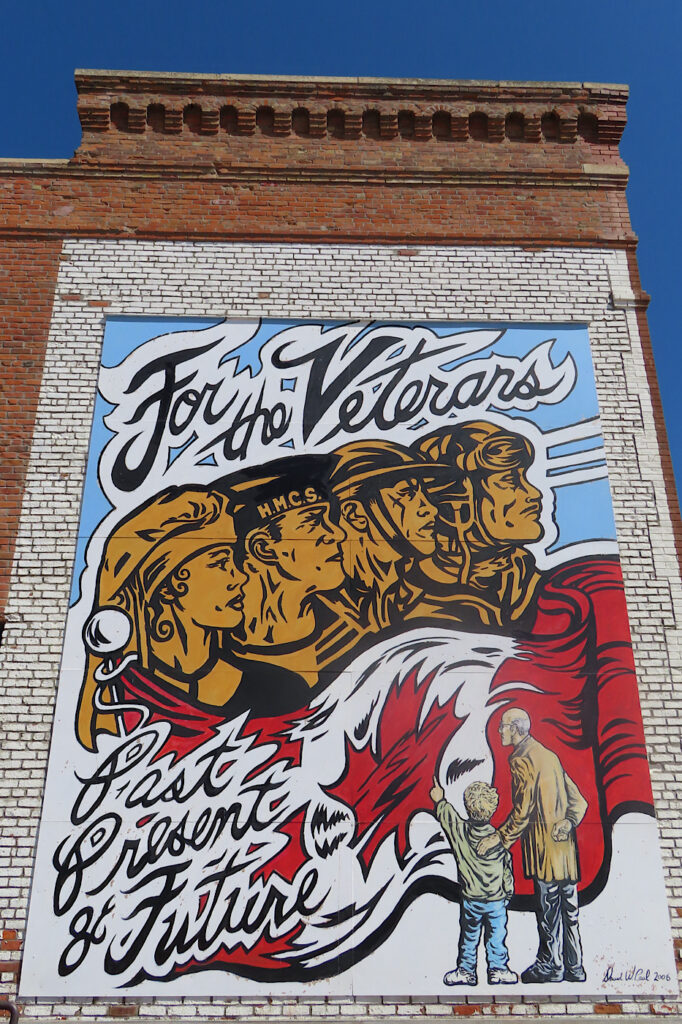
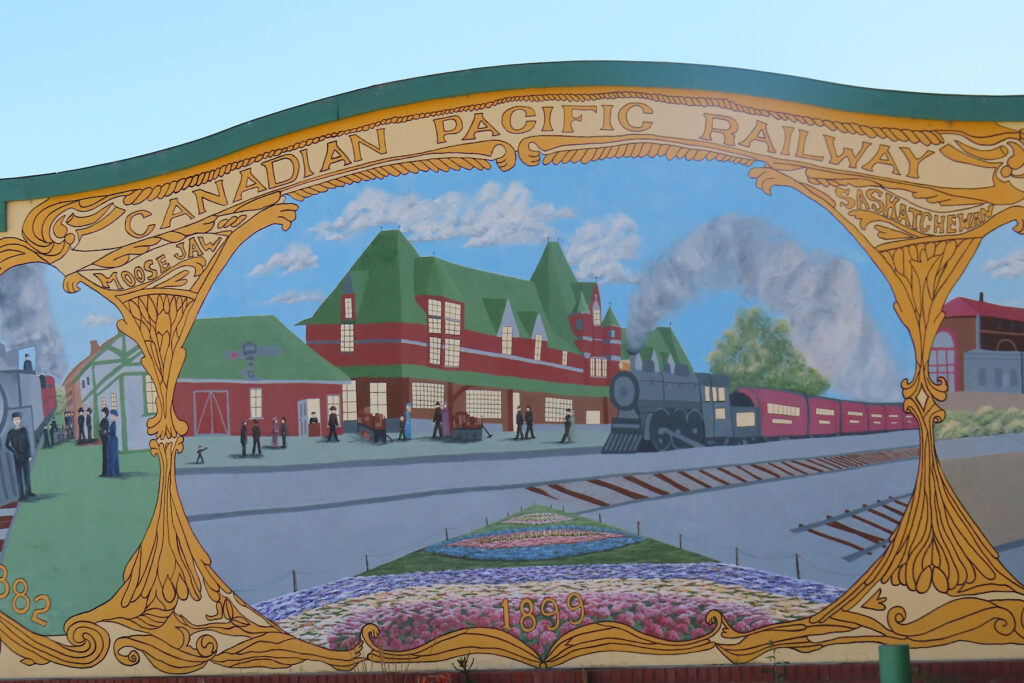
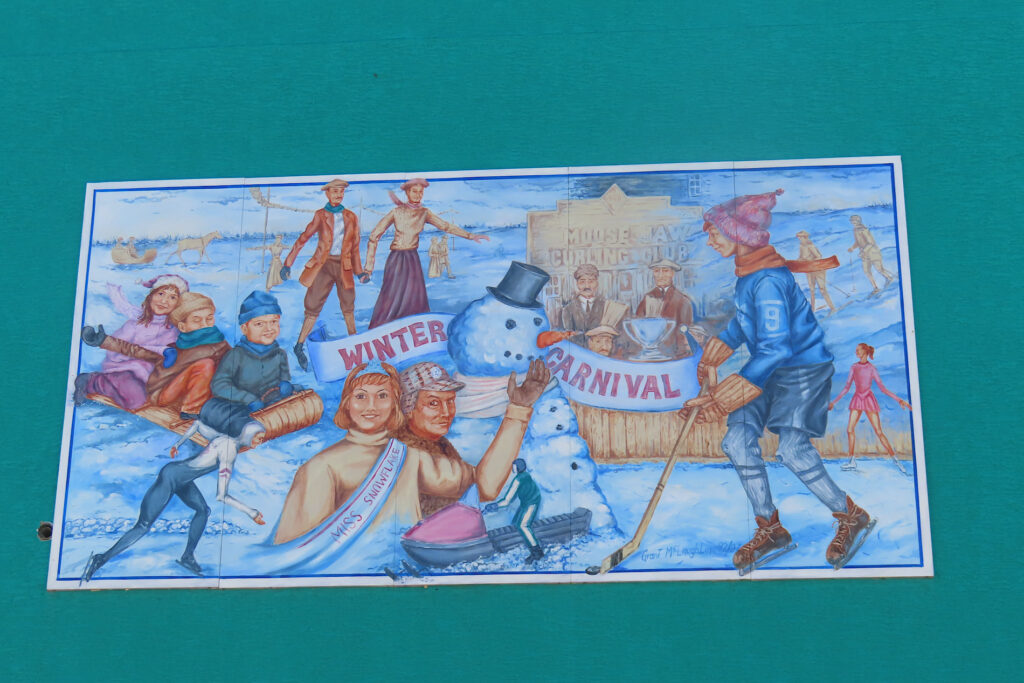
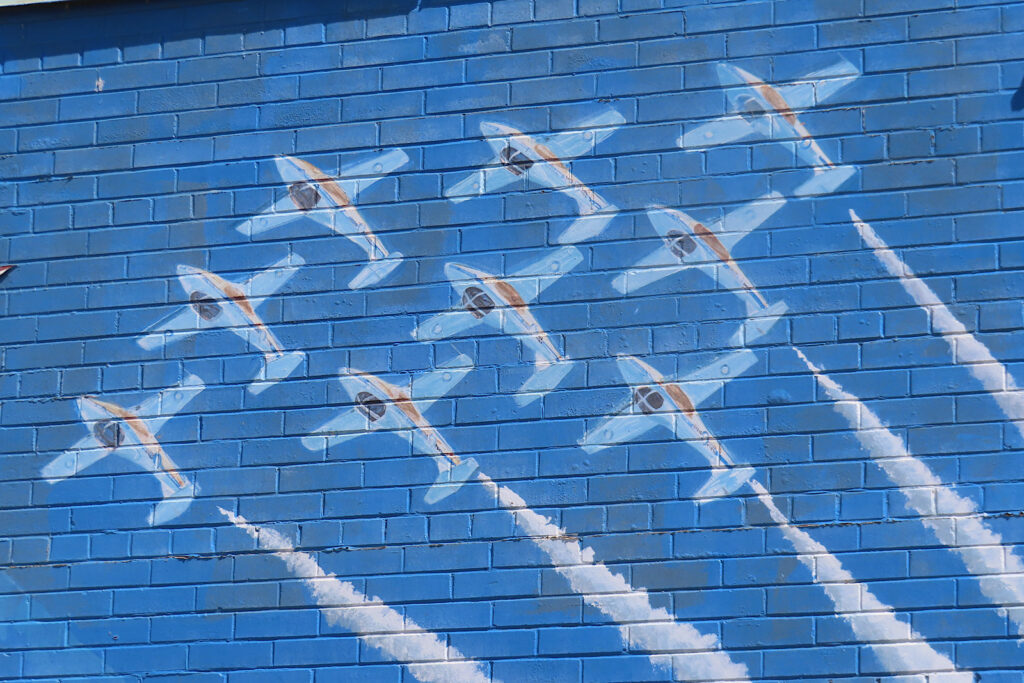

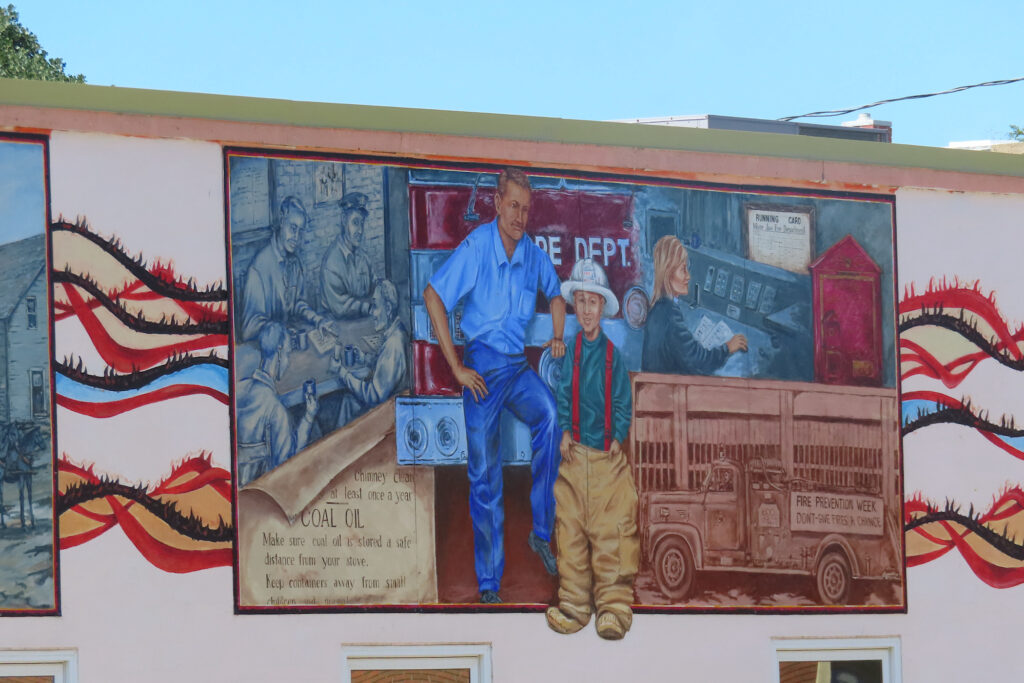
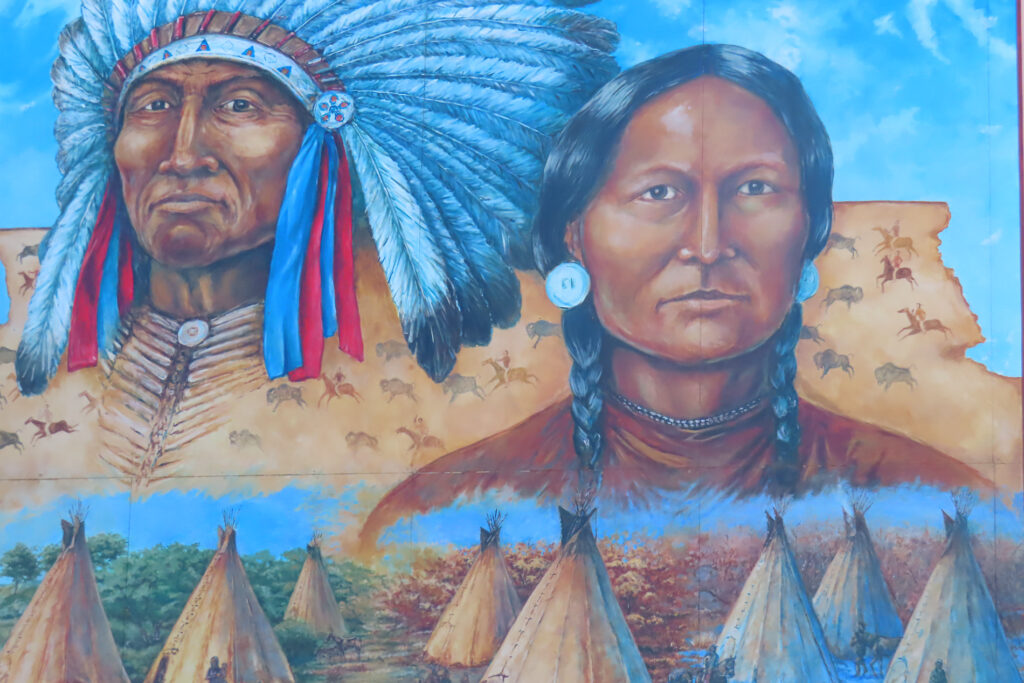

My favourite was Cruising Main Street—a massive 6-metre by 13-metre (20 ft x 44 ft) piece painted by Grant McLaughlin in 2011. Tucked behind the Mae Wilson Theatre at 217 Main Street North, it captures Moose Jaw’s roaring twenties with vintage cars, period-dressed townsfolk, and even two life-sized sculpted figures stepping out in three dimensions. The clever mix of mural and sculpture – as seen in top of post photo – makes it feel as though history itself is coming alive. If you only have time for one, don’t miss this one.
Ghost Signs turned Murals
Not all of Moose Jaw’s art was created to be art.
High above sidewalks and alleyways, you’ll spot ghost signs—the fading painted advertisements of businesses that once thrived here. From flour mills to hardware stores, the lettering may be weathered, but the charm is undeniable. These signs weren’t intended to be artistic, but decades of sun, wind, and time have transformed them into ghostly echoes of the past.
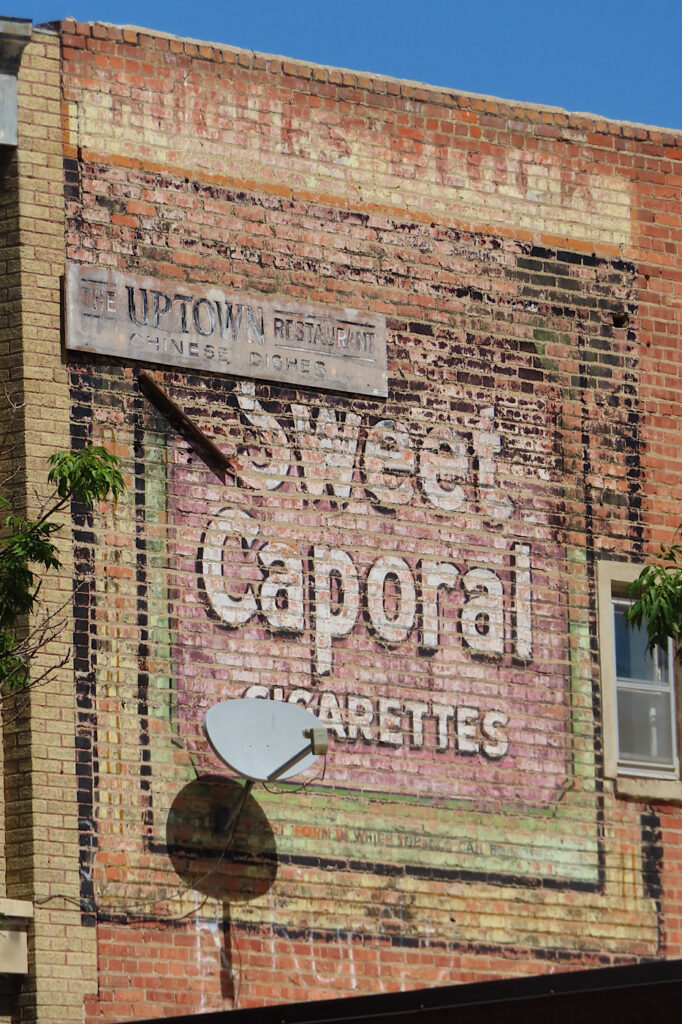
In many ways, they are accidental murals. They are unintended reminders of Moose Jaw’s entrepreneurial spirit. Much like the official murals, they tell stories of the people who lived and worked here, but in a quieter, more haunting manner.
Is Architecture Art?
While following the mural trail, we couldn’t help but pause to admire the historic architecture. Downtown Moose Jaw is filled with handsome brick buildings. Many of these are over a century old. Their ornate cornices, arched windows, and decorative stonework are striking reminders that architecture is more than just function—it’s form and flair.


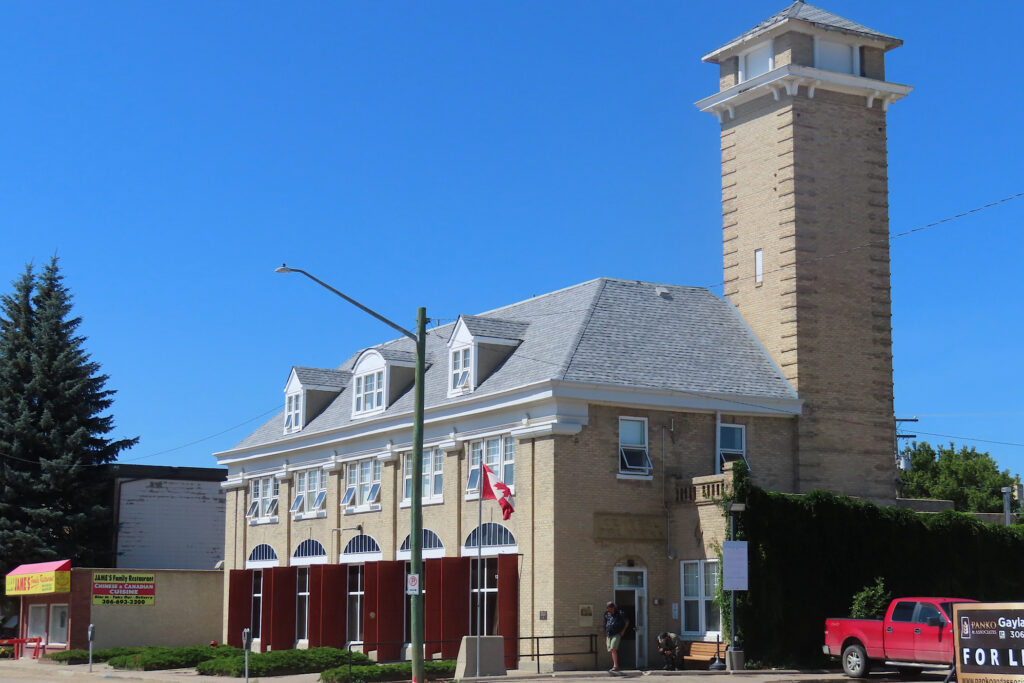
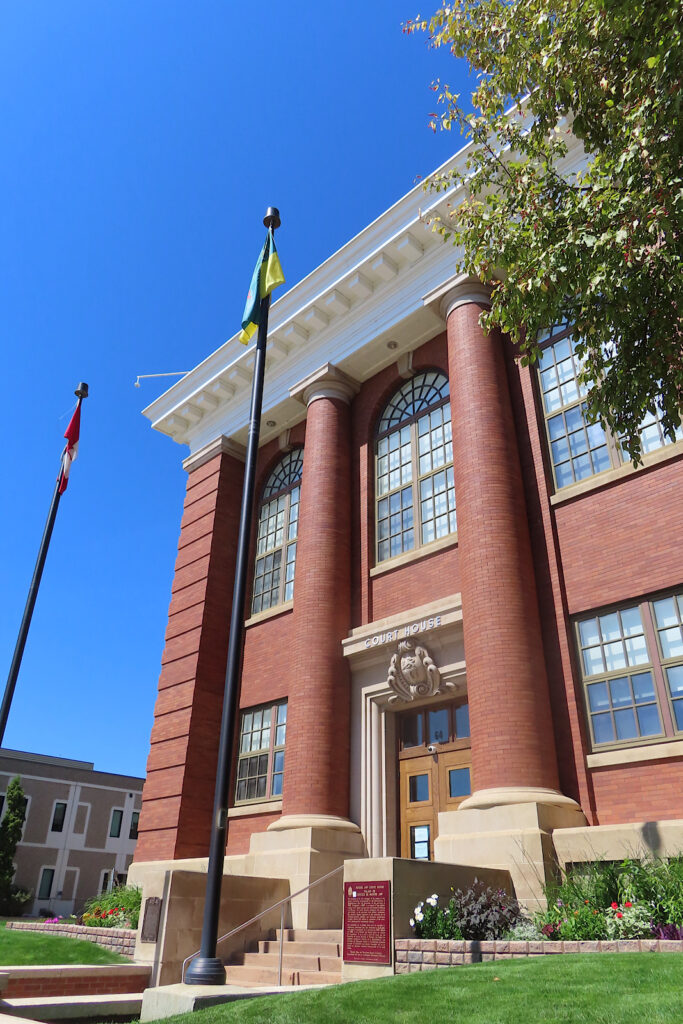
The very word architecture carries “art” at its heart, and Moose Jaw’s buildings prove it. Whether you see them as practical history or creative expression, they add yet another layer of visual richness to the city’s outdoor art scene.
When You Go
If you’re planning your own mural hunt, here are a few tips:
- Pick up a mural map. You can find one online or at the visitor information centre. Having a guide makes it easier to track them down, but part of the fun is stumbling across them unexpectedly.
- Allow at least an hour. You can see a good number of murals in a short walk, but if you want to track down all 50, plan on half a day or more.
- Look up and look around. Murals are tucked in alleys, behind theatres, or high on building walls. Don’t forget to scan for ghost signs while you’re at it.
- Pair it with history. Start with a Tunnels of Moose Jaw tour, then carry that sense of storytelling into the streets as you follow the murals.
- Bring your camera. The murals are vibrant, detailed, and make for fantastic travel photos.
Exploring the murals of Moose Jaw is more than an art walk—it’s a way of connecting with the city’s layered history. From the bold colours of modern muralists to the faded brushstrokes of long-gone sign painters, Moose Jaw wears its past proudly on its walls.
So next time your Saskatchewan adventures take you down the Trans-Canada Highway, plan a stop in Moose Jaw. Wander the streets, hunt for murals, and let the outdoor art tell you stories that the prairie winds have carried for over a century.
Looking for more Saskatchewan adventures? Check out these posts:
Travel Adventures: Exploring Fort Walsh National Historic Site
Canoeing the South Saskatchewan River
Actively Exploring Prince Albert National Park’s Past
Another Saskatchewan Classic: Moose Mountain Provincial Park
PIN THIS POST FOR FUTURE REFERENCE!
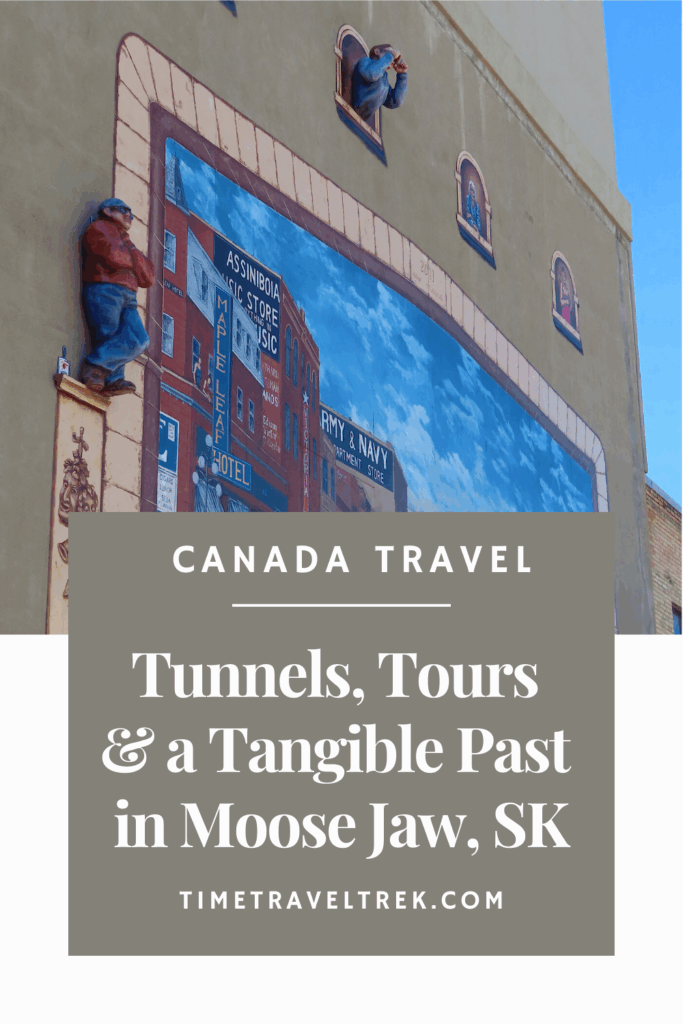
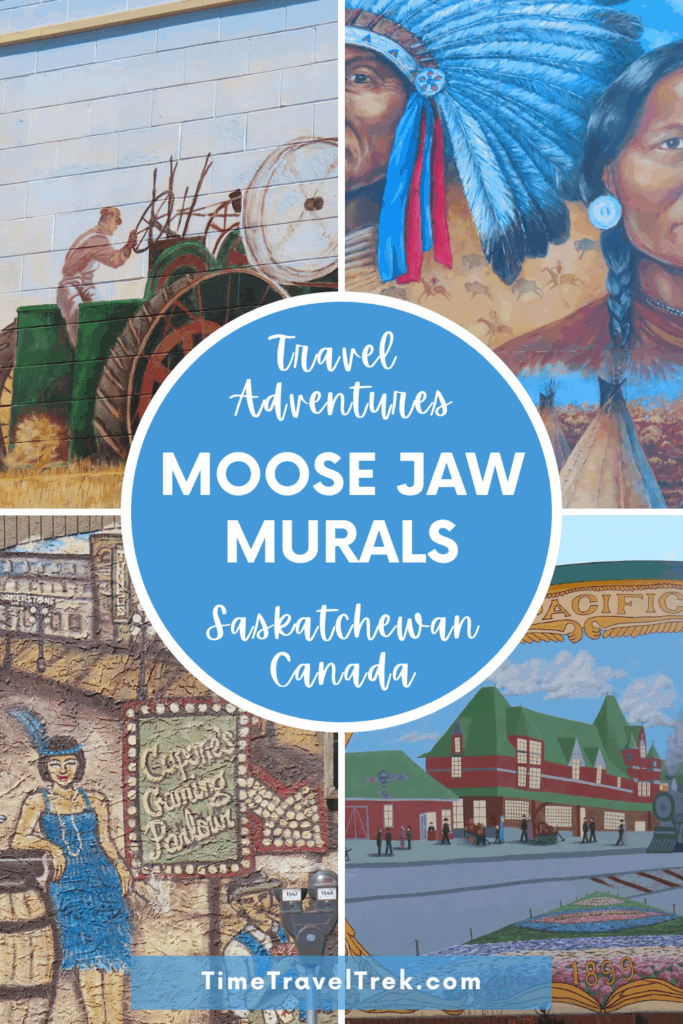
Leave a Reply